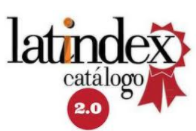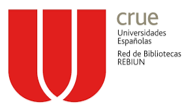UNASUR and the state-centric perspective of security in South America
DOI:
https://doi.org/10.35305/cc.vi129.13Keywords:
UNASUR, security, regionalism, Critical Security Studies, state, centrismAbstract
Over the last few decades we have witnessed an emerging interest in security topics and mechanisms to analyse these. In the context of globalization, new threats have appeared (not only interstate, but mainly, intra- and trans-state), as well as theoretical approaches (such as Critical Security Studies, CSS) to deal with them. Regarding the South American region it is useful to consider the constitution of the Unasur as a forum to coordinate policies with a very relevant geostrategic and security influence. In this paper, I deal with the logics that motivated the birth of the UNASUR project, in order to examine the way this regional project acts against different types of security threats and regional crises until 2016-17, when Venezuelan crises escalated. Furthermore, empirical evidences are tested with the common characteristics proposed by Peoples and Vaughan-Williams for the CSS. Some conclusions are drawn as new aspects have been incorporated to the way UNASUR addressed regional conflicts (security as a derivate concept and a broader security agenda), while an important element remained the same: a state-centric perspective.
Downloads
Downloads
Published
How to Cite
Issue
Section
License
Copyright (c) 2020 CUPEA Cuadernos de Política Exterior Argentina

This work is licensed under a Creative Commons Attribution-ShareAlike 4.0 International License.
Aquellos autores/as que tengan publicaciones con esta revista, aceptan los términos siguientes:
- Los autores/as conservarán sus derechos de autor y garantizarán a la revista el derecho de primera publicación de su obra, el cuál estará simultáneamente sujeto a la Licencia Creative Commons Reconocimiento-NoComercial-CompartirIgual 4.0.
- Los autores/as podrán adoptar otros acuerdos de licencia no exclusiva de distribución de la versión de la obra publicada (p. ej.: depositarla en un archivo telemático institucional o publicarla en un volumen monográfico) siempre que se indique la publicación inicial en esta revista.
- Se permite y recomienda a los autores/as difundir su obra a través de Internet (p. ej.: en archivos telemáticos institucionales o en su página web) antes y durante el proceso de envío, lo cual puede producir intercambios interesantes y aumentar las citas de la obra publicada.
















